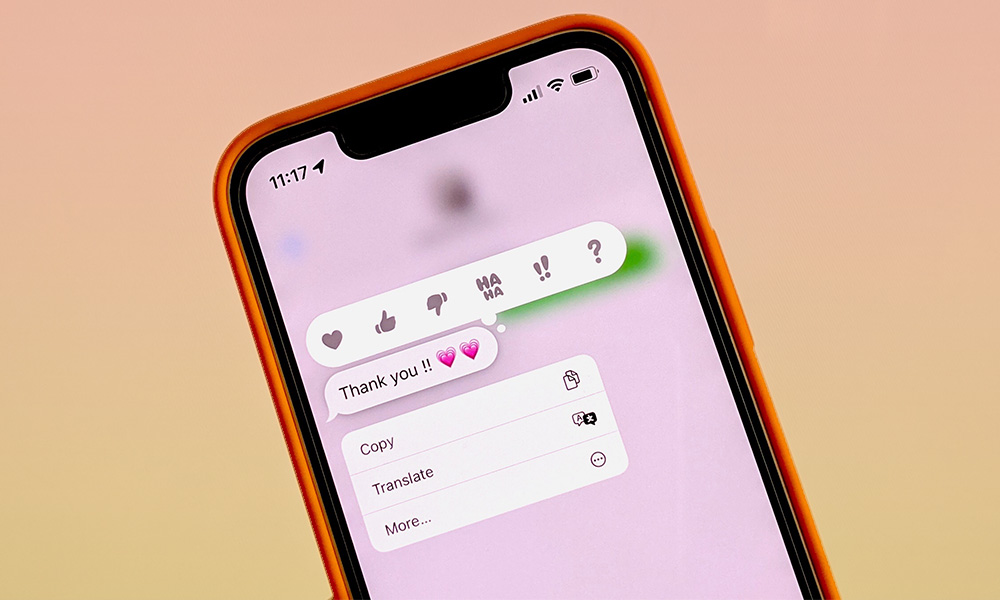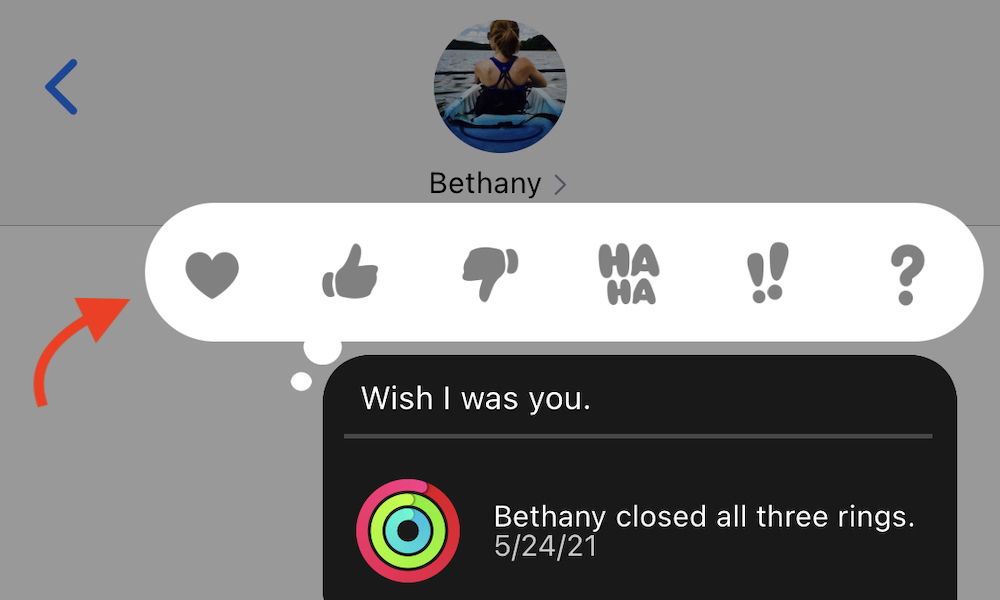Google Cooks up New Way to Display iPhone iMessage Reactions (Tapbacks)
 Credit: Elijah Fox
Credit: Elijah Fox
Toggle Dark Mode
Although Apple wasn’t the first messaging provider to come up with the idea of letting users add emoji reactions to messages, the Tapback feature (shown above and below) in iMessage still beat Google to the punch by a few years.
That may not be all that surprising, considering that Google’s messaging ecosystem has frankly been a mess for years. Android users have had to contend with years of chaos as different factions within Google have come up with a plethora of messaging apps that didn’t even talk to each other, including Google Messenger, Duo, Allo, Hangouts Chat, Android Messages, and Chat.
To be fair, it does look like Google has been cleaning up its act with the new RCS standard, but it still has a long way to go before it catches up to the ubiquity of iMessage among users of Apple devices.
In fact, iMessage works so well within the Apple ecosystem that the iPhone maker has shown no desire to embrace RCS.
However, Google decided that even if Apple isn’t about to get on board with RCS, it should at least make the lives of Android users better when they find themselves interacting with iPhone users over SMS.
In what can only be considered a move toward ecumenical harmony among users of different messaging platforms, Google cooked up a way to translate the SMS Tapback responses from Apple’s Messages app into proper emoji reactions.
Technically speaking, this isn’t really rocket science, but we commend Google for thinking at least a bit out of the box here.
While blue-bubbled iMessage conversations always display Tapbacks as proper emoji reactions, green-bubbled SMS recipients get a text description instead.
For example, if somebody says “Let’s do lunch tomorrow” and you Tapback with a thumbs-up reaction, your iPhone will send a message that says you “Liked ‘Let’s do lunch tomorrow.'”
So, all that Google really needs to do in its messaging app is capture these canned text messages, and instead of displaying them, apply the appropriate emoji reaction to the original message. This is made even easier by the fact that Apple repeats the entire message in the Tapback response.
Google’s Emoji Translations
Not only do the emoji reactions look nicer, but it also avoids the mess of seeing the entire original message repeated back in a response.
The Android Messages app simply hides this text response, turning it into an emoji reaction instead.
It’s even clever enough to keep looking for more Tapback responses, and update the original comment accordingly.
In other words, if you initially “like” a response, and then later change that to “love” the response, Android Messages will keep up.
According to 9to5Google, the new iMessage reactions feature has begun rolling out to Android users, and while it works reasonably well, it’s important to note that the emoji reactions don’t necessarily line up in exactly the way you may expect.
While the thumbs up and thumbs down emojis are obviously consistent, the others translate a bit differently. For instance, the heart Tapback shows up as








